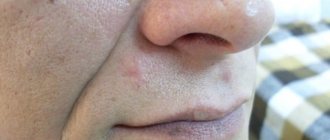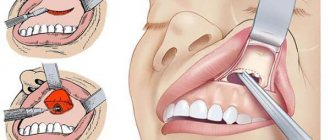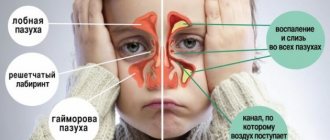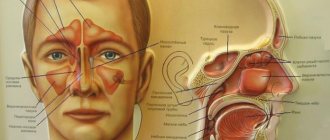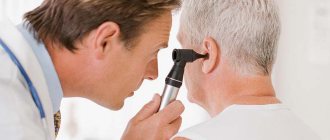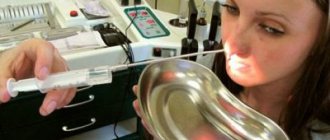Frontitis is an acute or chronic process in the mucous membrane that covers the inside of the two frontal sinuses. In recent years, statistics on the disease have increased significantly - both old and young people suffer from it. A puncture for frontal sinusitis can be prescribed by the attending physician if the patient seeks help too late, thereby triggering his condition.
Another indication for surgery is the lack of the expected result from conservative therapy. If in the initial stages it is quite easy to cope with the pathology, then chronic frontal sinusitis increases the risk of dangerous complications. In any case, it is better to entrust the choice of treatment regimen and method to professionals.
Progress of the operation
The technique for performing trephine puncture of the frontal sinus is generally the same in all cases.
First of all, the surgical site is numbed. To do this, an anesthetic injection is made into the mucous membrane of the nasal sinuses. A series of injections with an anesthetic drug are also given around the area of skin through which the instrument will be inserted.
At the stage of preparation for surgery, the surgeon determines the point of insertion of the instrument into the sinus. This is achieved using x-rays of the facial part of the skull obtained in advance.
The instrument for puncture is selected individually depending on the thickness of the septa and the posterior wall of the sinus. Under no circumstances should it be pierced.
Trepanopuncture is performed through the forehead bone, which means a drill is necessary. If the operation is performed on a child’s skull, the doctor uses a thick needle, since the bones of a small patient are still thin.
After the bone is pierced, a plastic tube is inserted into the hole, through which an antiseptic is supplied and pus is pumped out through it. To prevent the tube from falling out of the hole, it is fixed with adhesive tape.
At the end of the rinsing, a contrast agent is injected into the cavity, which is reflected on X-ray photographs. This helps the doctor determine how successful the surgery was.
All drugs and liquids are selected taking into account the individual characteristics of the patient’s body. Even the likelihood of an allergic reaction is taken into account.
The tubes through which fluid was pumped out from the frontal sinuses are removed 5-6 days after the procedure. The holes remaining in this place will fill completely over time.
What is the name of the forehead puncture operation for frontal sinusitis?
The operation to puncture the frontal sinus for frontal sinusitis is called trephine puncture
A puncture of the frontal sinus during frontal sinusitis is a trephine puncture. This operation involves piercing the sinus using special medical instruments. Subsequently, through the resulting hole, the purulent contents of the frontal sinus are drained and it is thoroughly washed with medications with antiseptic properties.
Trepanopuncture of the frontal sinuses for frontal sinuses is done in a hospital setting. This operation is possible both in a private clinic and a public one. Significant experience of a doctor is not required to perform trepanopuncture of the frontal sinus, so even a young specialist can perform the operation.
Trepanopuncture is performed under local or general anesthesia, depending on the indications and wishes of the patient. This operation is considered quite common; thanks to it, various diseases of the frontal sinus are successfully treated and many complications are prevented.
Trepanopuncture of the frontal sinuses for frontal sinusitis is not at all dangerous and is easily tolerated by almost all patients.
Nasal drops
You can make your own nasal drops. They are used when diagnosing “chronic frontal sinusitis”, treatment of which at home is considered optimal. There are several proven recipes:
- Black radish juice is used to “puncture” the nose, which allows you to quickly restore normal breathing.
- Kalanchoe leaves. They are placed in the refrigerator for 3 days. After this, they are washed, finely chopped and the juice is collected. The latter is diluted in water in a ratio of 1:2 (1 part juice, 2 parts water).
- Propolis. It needs to be frozen and then crushed (50 g). After this, you need to add 10 g of olive oil and leave for 3 days in a dark container.
Such drops should be instilled only after inhalation and rinsing. However, this cannot replace traditional treatment, because frontal sinusitis develops quite quickly, and folk remedies are not always able to eliminate the cause of the disease.
What folk remedies can be used for frontal sinusitis?
Traditional medicine offers many methods for treating this type of sinusitis. This:
Inhalations. The simplest way is to inhale the vapors over freshly boiled potatoes. To enhance the effect of steam, you can breathe over a hot decoction of medicinal herbs, for example, chamomile, bay leaf, adding a couple of drops of essential oil. It is best to give preference to tea tree or eucalyptus oils.
Rinse. Chop the onion and pour in 200 g of boiling water. Add a spoonful of honey to the cooled mixture and rinse your nose three times a day. You can also use chamomile decoction or saline solution prepared at home for this purpose. To do this, add a spoonful of salt and a couple of drops of essential oil to a glass of cooled boiled water.
Drops. Juice is squeezed out of peeled and grated black radish, which is instilled up to 4 times a day. You can also use the juice of cyclamen tubers, but only after preliminary dilution with water in a ratio of 1:4.
But you can start treatment with any folk remedies only with the permission of an ENT specialist, and exclusively as a supplement to antibacterial therapy.
Procedure
Puncture for frontal sinusitis implies a violation of the integrity of bone tissue. The thinnest part of the frontal bone is selected, which is drilled or perforated, depending on the chosen treatment method. The exact location of the puncture can be determined by taking photographs of the skull using lead marks.
The instruments and techniques used to perform the operation vary. The doctor selects the most successful method, based on the patient’s age, anatomical features of the skull, concomitant diseases and other factors
An important point in the operation is determining the depth of the puncture - the back wall of the frontal sinus is adjacent to the brain, and any carelessness can result in serious consequences
The puncture is carried out in two ways: drilling and chiselling. The latter option is undesirable in cases where there are pathologies of the brain or facial skull. The operation is performed under local anesthesia. After the puncture, drainage is introduced. Through it, purulent contents are extracted, and antibacterial and antiseptic solutions are introduced. Decongestants and anti-inflammatory medications can be given through the tube. The drainage tube is not left in place for more than 5 days. Inpatient treatment usually lasts about a week.
It is almost impossible to do without surgery for advanced frontal sinusitis. This is the only method that provides a 100% cure guarantee. Frontitis is fraught with serious complications, including life-threatening ones. That is why you should not be afraid of a puncture and worry about possible aesthetic problems. The operation is quick, relatively painless, and the recovery period is easy.
Trepanopuncture of the frontal sinus
The frontal sinuses are bony cavities located above the eye sockets and lined with mucous membrane. A person has two frontal sinuses, which are connected to the nasal cavity by openings. Through the holes, the sinuses are ventilated and mucus is removed.
Inflammation of the frontal sinus
When the mucous membrane of the frontal sinus becomes inflamed, acute frontal sinusitis develops, the main symptoms of which are difficulty in nasal breathing, pain in the forehead, purulent discharge from the nose, and an increase in body temperature up to 390C. Acute frontal sinusitis is a dangerous disease, since the posterior wall of the frontal sinus is also the anterior wall of the cranial cavity.
Therefore, in acute frontal sinusitis there is a risk of infection penetrating the meninges.
If conservative treatment of frontal sinusitis within 3 days from the start of anti-inflammatory therapy does not give the desired effect, there is a high risk of infection entering the meninges, trephine puncture of the frontal sinus is performed. Today, this is the most effective external method of accessing the frontal sinus to remove purulent contents.
In this case, a skin incision up to 1 cm long is made along the eyebrow line. After this, a hole of up to 3.5 mm is made in the anterior wall of the frontal sinus with a special drilling tool. A drainage tube is inserted through the hole into the sinus cavity, providing drainage of the sinus lumen with the outflow of pus and local drug treatment.
Trepanopuncture
The device for trepanopuncture consists of a drill, a device for its manual rotation, a limiter for penetration deep into the tissue, as well as a set of special cannulas for washing the sinus.
Before the operation, markings are made to determine the trephine puncture point.
A vertical median line is drawn in the center of the forehead and the back of the nose, a second line is drawn horizontally along the bony edge of the brow ridge, the third line is the bisector of the right angle between the first two lines.
The point for applying the trepanoborum is marked at a distance of 1-1.5 cm from the angle, making sure to correct the depth and position of the sinus using radiographs. Trepanopuncture is performed in a hospital setting under local anesthesia (2% lidocaine solution or 1% novocaine solution).
When the drill passes the bony wall of the frontal sinus, a feeling of “sinking” appears. Through the resulting hole, the depth of the sinus and its posterior wall is monitored with a probe. A special cannula is inserted into the hole to wash the frontal sinus and administer medications for 2-7 days.
Source: https://fitodo.net/trepanopunktsiya-lobnoy-pazuhi/
Surgical intervention
During the operation, the doctor removes the tumor and adjacent pathological areas (tissues, lymph nodes). Surgical treatment of non-small cell lung cancer is especially effective in the early stages. If the operation is successful, it is possible to achieve a complete cure or stable remission. In modern medical practice, the following options for eliminating tumors are used:
- pneumonectomy (removal of the part of the lung affected by the tumor);
- lobectomy (excision of an organ lobe);
- bilobectomy (removal of two or more lobes).
Before surgery, the patient must undergo a comprehensive examination again to ensure that the tumor is malignant.
It is also important to ensure that there are no contraindications to the procedure and that the tumor is operable. Among the main contraindications to surgical intervention are pathologies of the heart and blood vessels, severe exhaustion of the body, and advanced age.
After surgery, the patient is placed in the intensive care unit, where his vital signs are continuously monitored and adequate pain relief is provided. If necessary, symptomatic treatment is prescribed.
Surgical treatment of cancer is a complex procedure. Therefore, its implementation may be accompanied by complications. Among the latter, the most common disorders are: respiratory failure, bleeding, arrhythmia, and infection.
Prevention
Despite the positive reviews about trephine puncture of the frontal sinus, it is possible to avoid this procedure by simply following the rules for the prevention of diseases that cause swelling of the mucous membrane with subsequent complications. All measures in this case are aimed at preventing colds.
First of all, it is hardening the body by dousing it with cold water. You should start dousing yourself in the summer and do it regularly until the onset of winter frosts. During this time, the body gets used to the procedure and develops resistance to colds.
Be sure to move more and play sports - this strengthens the body's immune system. The immune system also strengthens with proper nutrition. Fresh vegetables and fruits should prevail in a person's diet. The meat should be boiled and not fatty. It is necessary to exclude cakes, pastries, soda and other sweets from the diet.
Indications
An operation to puncture the frontal sinus is prescribed if, after 3 days of drug treatment, the following pathological changes are observed:
- nasal breathing is very difficult;
- sharp or simply severe pain constantly occurs in the middle of the forehead;
- viscous mucus or mucus mixed with pus is released from the nose;
- The temperature remains elevated, and it does not decrease even after taking antibacterial drugs.
The danger of frontal sinusitis is that the posterior wall of the nasal appendages is the anterior wall of the main parts of the skull. When puncturing the frontal sinus, there is always a certain risk of affecting healthy tissue, but the doctor always takes this risk into account.
Indications and contraindications for trephine puncture
Not every patient is allowed to perform trephine puncture of the frontal sinuses during frontal sinuses, since the operation has certain indications and contraindications.
The main diseases when trephine puncture is inevitable are:
- Chronic frontal sinusitis, including its purulent form.
- Impaired nasal breathing.
- Painful sensations in the area of the frontal sinuses, on the superciliary arches.
- Severe runny nose, copious discharge of mucus from the nose with yellow splashes.
- Lack of effectiveness in treating frontal sinusitis with drugs.
Contraindications for trephine puncture of the frontal sinus for frontal sinusitis are:
- Diabetes.
- Meningitis.
- Circulatory disorders, including thrombophlebitis.
- Abscesses.
- Osteomyelitis of the bone tissue of the skull.
- Little kids.
Contraindications
There are some contraindications, in the presence of which trephine puncture is impossible. These include:
- Frontitis, the development of which is caused by injury
- Previous surgical interventions for frontal sinusitis
- Underdevelopment of sinuses and other anatomical pathologies
- Severe course of concomitant pathological conditions (diabetes mellitus, hypertension)
- Active stage of tuberculosis
The choice of instruments for trephine puncture also has a number of contraindications. For example, using a chisel is unacceptable for meningitis, abscesses, thrombophlebitis and osteomyelitis of the skull bones. That is why the manipulation requires a preparatory stage and an individual approach to the patient in each specific case.
Possible consequences of frontal sinusitis
If the doctor persistently recommends a minor operation, but the patient refuses, this is fraught with negative consequences. Firstly, your condition and well-being will worsen. And, secondly, progressive frontal sinusitis can provoke various complications.
- Associated inflammatory processes (pharyngitis, laryngitis, tonsillitis) with their far from pleasant symptoms.
- Orbital phlegmon is an inflammation of the retina that can lead to vision loss.
- Osteomyelitis is inflammation of the bone marrow tissue and changes in the shape of the skull.
- Meningitis is an inflammation of the meninges. And this is a risk of hearing loss, hydrocephalus and other serious illnesses.
- Encephalitis is an inflammation of the brain that can result in death.
- Brain abscess is an inflammatory process in any tissue of the organ. Consequence: neurological disorders, epilepsy.
- Blood poisoning. It can be caused by pus getting into the blood. The development of sepsis often leads to death.
Dysplasia deformation of the external nose
Deformations of the external nose are divided into acquired and congenital. Congenital deformities, in turn, are divided into genetically determined and traumatic intranatal.
Dysplasia caused by loss of tissue of the nasal pyramid
When eliminating these dysplasias, it is first necessary to restore the destroyed skin of the nose and its internal covering with the mucous membrane. There are several ways to do this. As an example, we give the “Ukrainian way”.
The Ukrainian method of V.P. Filatov consists in the formation of a stalk-like flap of skin on two feeding legs (Filatov’s tubular “walking” stalk), which is widely used in all branches of surgery. With its help, it became possible to move a piece of skin from any area of the body, for example, the abdomen, to the tissue defect (Fig. 1).
Rice. 1.
Method of nose surgery using a “walking” tubular stem by V.P. Filatov: 1 - increment of a stem cut from the skin of the abdomen to the forearm; 2 - moving the stem to the base of the nose for the subsequent formation of its pyramid (according to Peskova)
Nasal hyperplasia
These dysplasias include humped, hooked, and aquiline noses; excessively long noses with a drooping nasal tip.
In case of humpbacked nose, the operation consists of resection of the excess osteochondral tissue that causes the defect. Then the movable frame of the nasal cavity is repositioned, its shape is restored to the intended limits and the nasal septum is immobilized using a modeling (fixing) bandage until complete healing and tissue consolidation. The operation ends with a tight nasal tamponade and the application of a pressure bandage on the back of the nose, on top of which an aluminum or plastic splint is placed in the form of a plate bent to the shape of the nose; the latter is fixed with adhesive tape. It is recommended to remove intranasal tampons on the 4-5th day, and remove the external dressing - 8-10 days after surgery.
Nasal hypoplasia
These deformities include flat and saddle noses. Elimination of defects consists of tunneling soft tissues in the area of the nasal dorsum, followed by the introduction into the resulting cavity of prostheses made of non-reactive alloplastic materials, pre-modeled according to the size of the defect, or, preferably, an autograft of cartilage or bone tissue.
In fresh cases of retraction of the nasal dorsum resulting from injury, its reposition is possible by influencing the sunken tissues from the inside by lifting them with a nasal rasp to the previous level, followed by fixing bilateral tight nasal tamponade according to Mikulicz.
Dislocations of the nasal pyramid
These deformities include crooked noses (deviation of the tip of the nose or its dorsum), defined by the term “skewness” or “nasal scoliosis.” Correction of such defects is possible in two ways. In fresh cases of obliquity, resulting from a lateral blow to the back of the nose with a displaced fracture of its bones, manual reposition is possible (Fig. 2). After reposition, a fixing plaster or colloid bandage is applied (Fig. 3).
Rice. 2.
Manual reduction of the nasal dorsum in fresh cases of injury resulting in scoliosis of the nasal dorsum (according to Voyachek V.I., 1953)
Rice. 3.
Splinting the nose after its reduction (according to A. S. Kiselev, 2000)
For chronic dislocations of the nasal pyramid, surgical intervention is performed as planned. The operation is performed endonasally under anesthesia. In case of obliquity, an osteotomy of the nasal bones and the ascending process of the maxillary bone is performed. In the same way, deforming bone fragments can be mobilized and, together with the nasal bones and a fragment of the upper jaw, placed in the desired position. An immobilizing bandage is applied to the nose for 2-3 weeks. According to indications - nasal tamponade according to V.I. Voyachek.
Indications for puncture
Before talking about the puncture procedure itself, you should understand why it is done. When we talk about inflammation of the frontal or frontal sinus, this phenomenon is called frontal sinusitis. Like any inflammatory process, frontal sinusitis goes through three main stages in its development:
- Serous, which is characterized by swelling of the mucous membranes, dysfunction of epithelial cells and initial tissue swelling.
- Catarrhal, in which the process of destruction of the vascular wall of small capillaries begins and the release of the liquid part of the blood into the sinus cavity - the formation of exudate.
- Purulent, which is the last complicated stage of the inflammatory process. The purulent process begins when the exudate becomes infected with pathogenic bacteria.
Most often, against the background of swelling of the mucous membranes of the sinuses and nasal passages, loose mucous membrane covers the narrow anastomosis between the sinus and the nasal cavity. This significantly aggravates the course of frontal sinusitis or any other sinusitis, as pus continues to accumulate and form in a closed cavity. The increasing pressure of pus mechanically irritates the walls of the sinuses, causing severe throbbing pain in the projection of the sinuses. With the further development of the process, sooner or later there will come a moment when the pressure in the closed cavity reaches a maximum and pus breaks through the bone bridges of the sinus into the surrounding tissues and structures:
- The membranes of the brain.
- Eye socket and eyeball.
- Lattice labyrinth.
- Sinus of the main or sphenoid bone.
It is logical to assume that in order to avoid such serious complications, it is necessary to drain the pus in time and relieve the growing pressure. Therefore, a timely and competent puncture of the frontal sinus helps to significantly reduce pain and prevent purulent complications of frontal sinusitis.
Let us outline the main indications for the procedure:
- A purulent process in one or two sinuses with a closed outlet.
- Severe headaches that cannot be treated with medication.
- Severe fever that does not decrease with three days of taking antibacterial drugs.
- Ineffectiveness of antibiotic therapy for 5-7 days. The effect is assessed by the general condition of the patient, the nature of the pain, blood tests, and monitoring of radiographs.
How is surgery performed for frontal sinusitis?
If standard treatment is unsuccessful, the doctor may prescribe emergency surgery.
This is necessary when there is a large accumulation of pus, which cannot leave the frontal sinus and nasal cavity on its own. If the operation is not performed on time, the patient runs the risk of developing brain abscesses, as well as blood poisoning. In some cases, the patient may experience osteomyelitis of the bones of the nasal cavity and skull.
To avoid the risk of complications, as well as to cure frontal sinusitis completely, it is necessary to perform a puncture of the frontal sinus. During the operation, the specialist removes all purulent accumulations and also rinses the sinus with special solutions. After sanitation, the mucous membranes are treated with potent antiseptics.
Surgery for frontal sinusitis is performed only after tests, radiography and many other studies have been completed.
Frontal sinus surgery can be performed on the frontal part or by inserting the necessary needles through the nasal passage. It is necessary to choose the type of operation with the help of a doctor, after a thorough diagnosis.
Surgery directly on the forehead may leave some defects, so doctors prefer internal treatment.
If there is a large accumulation of purulent secretion after a puncture of the sinuses, the surgeon will install a drainage through which the outflow of fluid will pass. It must be removed five days after the operation.
Frontal sinus surgery is considered simple and takes about twenty minutes. The procedure is performed under local anesthesia. The puncture site usually heals after one week.
How long does it take for rehabilitation?
Standard treatment of frontal sinusitis takes about three weeks, but with surgery, improvement in well-being occurs already on the third day after surgery.
The full course of rehabilitation takes about ten days, which must be spent in a hospital.
At this time, the patient must take antibiotics and rinse the nasal cavity daily with specialized saline solutions. These procedures will help avoid complications.
When surgery should not be performed
Contraindications to surgery are systemic inflammation, as well as age under fourteen years.
Carrying out the operation
Penetration into the frontal sinuses is carried out with mandatory anesthesia - the mucous membranes of the middle nasal passage should be anesthetized. Most often, local infiltration anesthesia is sufficient to keep the patient comfortable during a serious procedure.
The optimal puncture point is determined, as a rule, by a preliminary radiographic examination, in which contrast guide marks are used. Pictures are taken in the anterior (frontonasal) and lateral projections. Modifications of the labels used:
- Cross-shaped, 10x10 mm in size, are used when taking a direct photograph;
- Round with a diameter of 5 mm, used when taking lateral photographs.
The different modifications of the tags are united by their material - they are cut exclusively from sheet lead, contrasting to X-rays. Removing the marks, the laboratory assistant applies a corresponding pattern to the skin. It is a guideline for the doctor, who must penetrate the bone of the frontal sinuses in the optimal place for the treatment to be most effective.
The puncture is carried out using special devices that the doctor prepares for each patient, selecting them in accordance with the indications of the x-ray examination
Here, regardless of the modification of the device used, it is important to determine the individual depth of the frontal sinuses so that the doctor, when punching or drilling the outer bone, does not damage the posterior wall of the sinuses
Usually a drill or needle no longer than 10 mm is used, which is the average. But in individual cases and when treating pediatric patients, the doctor adjusts the length of the needle and the diameter of the cannula tube through which the sinuses are washed with an antiseptic solution and medications are administered.
The technique for inserting the drainage tube is strictly followed: first, the drill or chisel is removed, a rigid plastic conductor is inserted into the hole, then a metal or plastic cannula is inserted into the sinus along it, which is fixed with an adhesive plaster on the skin of the forehead. The drainage tubes remain in the bone hole until the patient’s condition improves, but for no more than 5 days, when the tubes are removed from the hole in the bone so as not to disrupt the natural regeneration processes.
How to make a puncture for frontal sinusitis
In fact, the concept of “puncture” or “puncture” is a little broader than a needle prick in some unspecified place. Each type of sinusitis has its own techniques, approaches and possible puncture options. Let us list the main types of puncture of the frontal sinus.
Trepanopuncture
Trepanopuncture of the frontal sinus
This is the most frequently performed manipulation for frontal sinusitis. This is an old, time-tested procedure that any ENT doctor can perform. Its main advantages are reliability and low cost, since instruments and equipment for trephine puncture are available in every hospital.
The main access through which the doctor enters the sinus cavity is the front surface of the forehead. The access point can vary significantly from person to person, from different points on the eyebrow to the bridge of the nose. This puncture point is determined only with the help of an x-ray, since the structure and location of the sinuses is purely individual for each patient.
The meaning of trephine puncture is the mechanical drilling of the frontal bone above the projection of the sinus. The hole can be made with a thin drill, chisel, bur or special bone needles. Of course, the operation is performed under local anesthesia, as a rule, this is infiltration subcutaneous anesthesia with a lidocaine solution.
A thin catheter or tube is inserted into the resulting hole, through which the pus is removed with an aspirator or syringe, then the cavity is washed repeatedly with antibacterial solutions. The catheter will be left in the cavity for further washing of the frontal sinus and sealed with an aseptic dressing. Depending on how advanced the process is, such washings may require from 5 to 10, one procedure daily.
In fact, this manipulation seems creepy only at first glance. In reality, the patient does not feel pain, but after the procedure, on the contrary, experiences significant relief. The hole in the bone closes quickly after the catheter is removed. The only unpleasant thing is the possibility of a small scar forming on the skin.
Puncture of the frontal sinus through the nasal cavity
This procedure is much more gentle and physiological, since it does not leave scars on the skin, and the needle passes through the thinnest lower wall of the sinus.
Unfortunately, such a procedure is not possible for every patient. It all depends on the structure and location of the frontal sinus in relation to the nasal cavity.
The possibility of performing such a manipulation is assessed by an ENT specialist together with a radiologist after a series of photographs of the frontal sinus in various projections. Sometimes an additional image may be needed during the procedure itself to control the location of the needle.
To perform this manipulation, the doctor uses special nasal dilators and mirrors, with the help of which the projection of the lower wall of the sinus onto the nasal mucosa is maximized. Next, the puncture site is anesthetized with lidocaine or other local anesthetic and a puncture is performed with a fairly thick needle. The needle must be thick, because behind it a catheter is inserted into the sinus cavity to remove pus and subsequently flush the sinus. Further therapeutic measures are similar to those for trephine puncture.
Conservative treatment methods
In the initial and acute form of frontal sinusitis, there is no need to resort to such emergency measures as a puncture. Surgery will be required only if appropriate treatment was not applied at the very beginning of the development of the disease.
In case of acute frontal sinusitis, drug therapy is necessary. To make the treatment of the disease more effective, it is worth observing bed rest for the first few days. When the body is calm and not subjected to any stress, the immune system begins to work much better, and when the body’s natural resistance increases, the disease recedes much faster.
A mild form of frontal sinusitis does not require hospitalization of the patient. The patient is treated on an outpatient basis, and his duties include following all the doctor’s instructions at home. As a rule, for mild forms of frontal sinusitis, drugs for external and oral use are prescribed.
Before choosing the appropriate medications for a particular patient, the doctor should recommend a blood test. This will allow us to determine the sensitivity of the pathogen to various groups of antibiotics.
Antibacterial therapy is most effective at the initial stage of frontal sinusitis. However, in addition to antibiotics, the doctor may prescribe vasoconstrictor sprays or drops to reduce swelling and remove the contents of the frontal sinuses. Antipyretic and painkillers can be used. If the swelling is too severe, your doctor will prescribe a decongestant medication.
Treatment and care after surgery
After the operation, doctors recommend attending a halotherapy session in salt caves
After trephine puncture of the frontal sinus, it is especially important to follow medical recommendations and provide proper care for the operated area.
If the puncture of the frontal sinus was performed in a timely manner, the development of serious complications and infections can be prevented. Competent action by a doctor contributes to the rapid restoration of damaged tissues, healing of the sinuses and normalization of nasal breathing.
It is permissible to use medications after trepanopuncture only as prescribed by a doctor.
During the rehabilitation period after a puncture of the frontal sinus for frontal sinusitis, the following restrictions exist:
- It is necessary to exclude hypothermia of the body.
- It is forbidden to engage in heavy physical activity, and you should refrain from swimming.
- You cannot eat hot, cold or spicy food.
Doctors recommend going to a sanatorium or undergoing halotherapy sessions a month after frontal sinus surgery.
Complications
As with any surgical operation, there is always the possibility of complications from trephine puncture of the frontal sinus.
The patient may lose consciousness from excitement. There are cases when this condition was intensified by collapse.
Incorrectly selected anesthetic drugs can cause anaphylactic shock. To prevent this from happening, the patient is asked before surgery about the existence of such a reaction in his past. If he finds it difficult to answer, the doctor should be prepared for surprises during pain relief. But the easiest way to test the drug before surgery is to inject a small dose under the patient’s skin.
During the procedure, severe bleeding may occur as a result of damage to a blood vessel.
The most dangerous consequence of trepanopuncture of the frontal sinus is damage to the posterior wall of the appendage.
Complications after surgery include severe swelling of the nasal mucosa and soft tissues. Insufficient or inept wound care may cause inflammation.
We must never forget about the risk of death, so the doctor performing the operation must be prepared for any surprises and have the opportunity to call specialists of another profile into the operating room - a cardiologist, anesthesiologist, and resuscitator.
Consequences and complications of trepanation
When performing trepanopuncture of the frontal sinus with frontal sinusitis, the patient may develop complications, which is explained by the incorrect actions of the medical specialist at the time of the puncture.
The main consequences of such an operation may be:
- Air embolism of the brain - is formed due to the introduction of air into the frontal sinus before or after its lavage.
- Emphysema of the soft tissues of the cheek.
- Heavy bleeding - occurs when the needle is damaged during the puncture of the mucous membrane.
Such complications are dangerous to health, but are usually very rare. Most often, surgery to puncture the frontal sinus is successful and the patient tolerates it well.
Prevention
After complete recovery, it is necessary to begin strengthening the immune system and hardening it. Heavy sports are undesirable, but yoga, long distance walks, and physical therapy will help you recover faster and prevent re-inflammation. It is necessary to promptly identify and treat respiratory diseases, for preventive purposes, rinse the nose with sea water, and prevent the development of dental ailments.
After a puncture, drafts are dangerous. It is also undesirable to wrap yourself up excessively - this increases the risk of colds. The use of traditional medicine for the prevention of frontal sinusitis is advisable and approved by doctors. It is useful to drink linden tea, rosehip infusion, ginger root infusion, echinacea infusion - these products perfectly stimulate the immune system and help prevent relapses. Many drugs today can be found in tablet form or in the form of dragees - an excellent option for those who do not want to spend time preparing decoctions and tinctures.
If the nasal mucosa is dry, it is useful to instill oil-based drops. They are not addictive and are not a drug.
A person prone to ENT diseases must create optimal conditions in his home. It is necessary to increase air humidity, which is done using humidifiers. Dry air increases the rate of spread of respiratory infections, reduces the protective properties of the nasal mucosa and negatively affects human health in general.
